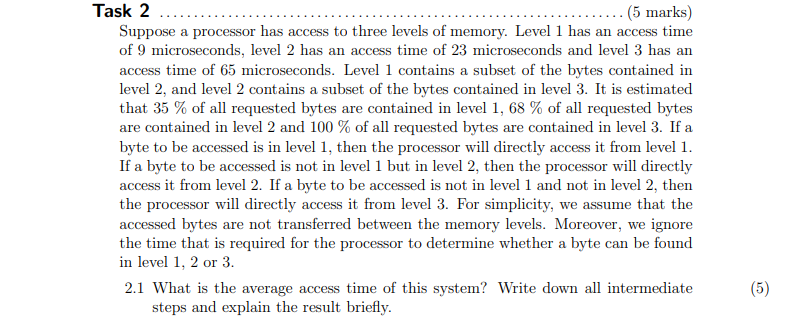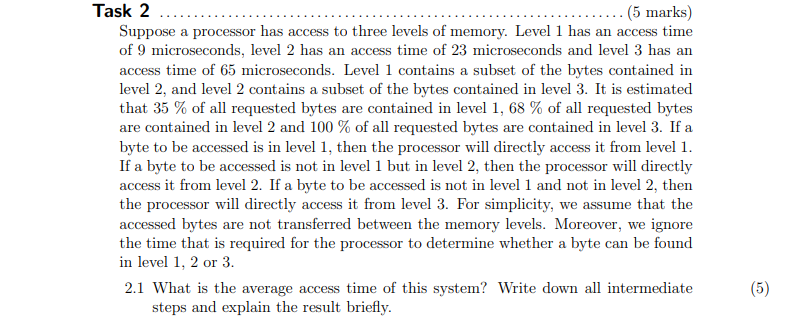Suppose a processor has access to three levels of memory. Level 1 has an access time of 9 microseconds, level 2 has an access time of 23 microseconds and level 3 has an access time of 65 microseconds. Level 1 contains a subset of the bytes contained in level 2, and level 2 contains a subset of the bytes contained in level 3. It is estimated that 35 % of all requested bytes are contained in level 1, 68 % of all requested bytes are contained in level 2 and 100 % of all requested bytes are contained in level 3. If a byte to be accessed is in level 1, then the processor will directly access it from level 1. If a byte to be accessed is not in level 1 but in level 2, then the processor will directly access it from level 2. If a byte to be accessed is not in level 1 and not in level 2, then the processor will directly access it from level 3. For simplicity, we assume that the accessed bytes are not transferred between the memory levels. Moreover, we ignore the time that is required for the processor to determine whether a byte can be found in level 1, 2 or 3. 2.1 What is the average access time of this system? Write down all intermediate (5) steps and explain the result briefly.
Suppose a processor has access to three levels of memory. Level 1 has an access time
of 9 microseconds, level 2 has an access time of 23 microseconds and level 3 has an
access time of 65 microseconds. Level 1 contains a subset of the bytes contained in
level 2, and level 2 contains a subset of the bytes contained in level 3. It is estimated
that 35 % of all requested bytes are contained in level 1, 68 % of all requested bytes
are contained in level 2 and 100 % of all requested bytes are contained in level 3. If a
byte to be accessed is in level 1, then the processor will directly access it from level 1.
If a byte to be accessed is not in level 1 but in level 2, then the processor will directly
access it from level 2. If a byte to be accessed is not in level 1 and not in level 2, then
the processor will directly access it from level 3. For simplicity, we assume that the
accessed bytes are not transferred between the memory levels. Moreover, we ignore
the time that is required for the processor to determine whether a byte can be found
in level 1, 2 or 3.
2.1 What is the average access time of this system? Write down all intermediate (5)
steps and explain the result briefly.


Step by step
Solved in 2 steps









